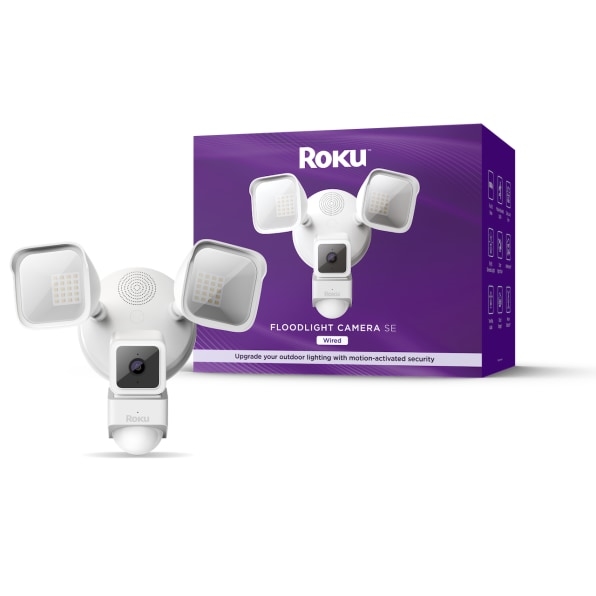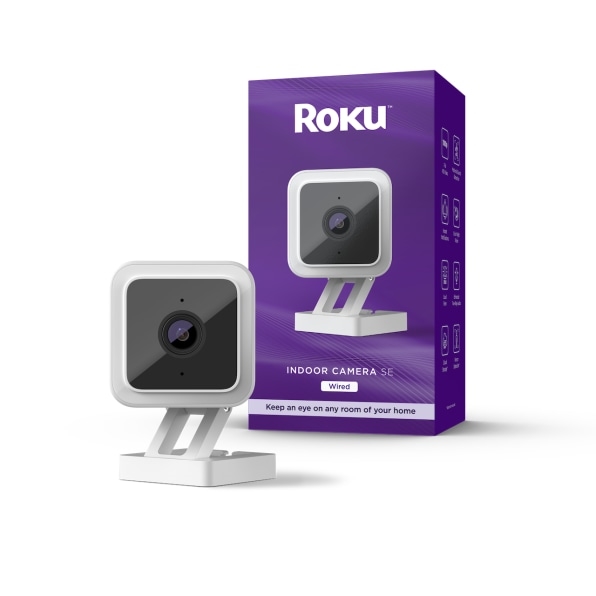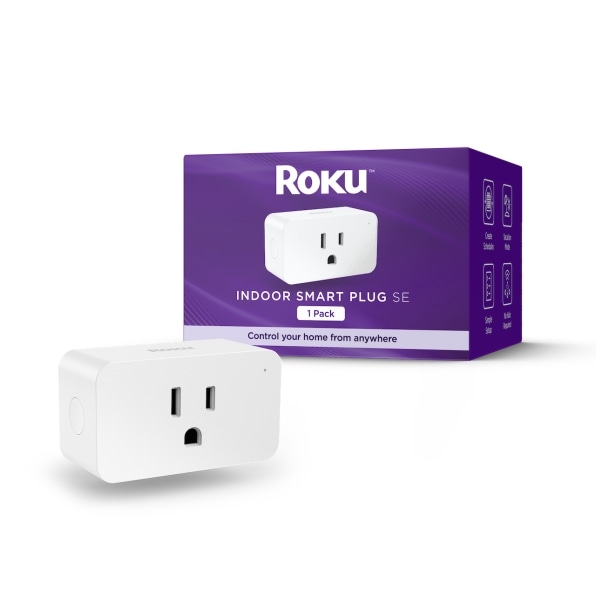Roku’s new smart home products are just a first step
What’s the most popular smart home technology we’ve seen so far? That’s easy: streaming video. It’s transformed the way we watch TV. And one of its enduring success stories is Roku. In the most recent quarter, people watched almost 21 billion hours of video on Roku’s platform, which is built into many TVs as well as its own boxes and sticks. According to Conviva, the company currently accounts for 31% of video streamed onto TVs, the highest share of any platform by far.
Roku has a familiar brand, a widely deployed software platform, and—perhaps most important—a long-standing knack for making tech approachable and affordable. Now it hopes to leverage all that to expand its presence in the home well beyond its traditional domain. Starting on October 17, a full line of Roku Smart Home gadgets will be available at Walmart stores; they’re also for sale on Walmart.com and Roku’s own online store as of today. (As reported by Dave Zatz of Zatz Not Funny, some units slipped out early.)
The products will include indoor and outdoor cameras, a floodlight camera, wired and wireless video doorbells, smart light bulbs, smart plugs, and a smart light strip. Everything is designed to be within reach of the masses, at prices from $6.88 for a light bulb to $99 for the floodlight camera.
If any of these minimalist, white-encased gizmos look familiar, there’s a good reason. Rather than designing its own array of smart-home items, Roku is working with Wyze Labs, a company that already makes all that stuff and sells it at similar prices.
That partnership isn’t hush-hush. The new Roku devices are “white-labeled Wyze products,” Roku founder and CEO Anthony Wood told me when we talked recently. But he also explained why Roku’s expansion beyond streaming video isn’t just about sticking somebody else’s products into boxes with the Roku label. It also allows the company to turn its streaming platform into a home-control hub.

Over the past few years, “we’ve been working on a whole-home operating system,” Wood says. “Basically, a unified software stack that makes everything simple.” Using Roku’s streaming boxes and remote control, for instance, you’ll be able to pull up video from the new Roku cameras and doorbells on the big screen while watching a TV show or movie.

[Photo: Roku]
For now, the software and services involved with these new products—including iPhone and Android apps—are a joint project between Roku and Wyze. Roku has taken on responsibility for strengthening security on the software side and points out that the products support measures such as two-factor authentication and encryption. They’re also certified by ioXt Alliance, an industry security consortium.
You can understand why Roku might want to emphasize that it’s not relying on Wyze to keep these Roku-branded products safe. Wyze’s own record in that area is notably shaky: In 2019, a data breach exposed the personal information of 2.4 million customers. Separately, Wyze reportedly let a vulnerability that hackers could have used to gain access to camera video go unpatched for three years.
From a hardware standpoint, Wood says, Wyze “kind of matches what we look for, which is good products at a low price. Our value is going to be integrating them into the Roku ecosystem.” According to Roku, Wyze will manage cloud services that store video and some customer information but won’t have access to that data.
The fact that Wyze is involved in the software aspect of these products at all is an act of expediency rather than a long-term plan. “We’ll be migrating the software over time to all-Roku software,” Wood says.
In search of killer products
In a way, Roku’s new smart-home ambitions aren’t really new. Wood started the company in 2002 after leaving ReplayTV, the DVR pioneer he’d founded. At first, he wasn’t sure exactly what his new company would do.
“I was like, ‘Well, there’s this convergence of technologies like the internet, consumer hardware, and software—the problem is that things are too hard to use, but they’re coming together, and they’re going to enable new products and ecosystems in the home,’” he explains. “My goal was to go after that. I wasn’t really totally sure what the killer products would be.”
In its early years, Roku released a box that displayed still images in HD and an internet radio along with spinning out a digital signage company. In 2008, it introduced a box that could stream Netflix’s still-newish video service. It was a skunkworks project that Wood had undertaken at Netflix’s request—and was originally going to be a Netflix product until Reed Hastings, that company’s CEO, decided that Netflix should be available everywhere. As a Roku product, the box was a hit, and the business it created has kept the company busy ever since.

Fast-forward to the present day, and there’s no shortage of smart home devices out there. But many devices are still too hard to use, particularly once you own multiple items and want to get them working together.
The tech behemoths’ efforts in the category have certainly been pockmarked with disappointment. For instance, Apple’s original HomePod once looked like it could be a springboard for greater smart-home ambitions—but it was on the market for only three years. Then there’s Google’s $3 billion acquisition of Nest back in 2014, which didn’t lead to any of the transformative developments that felt possible at the time.

That leaves plenty of opportunity for Roku to solve problems that others haven’t. “We’re launching with these initial products, but we do intend to open it up to others,” Wood says. “And our goal is to become part of the glue that makes it easy to have different kinds of smart devices. We’re not going to make dishwashers, for example, but dishwashers should integrate into this system.”
Making it up in volume
Roku’s streaming devices start at just $29, not including any markdowns or the fact that many people get its software built into a smart TV. Without ads, premium content, licensing, and other services Roku can monetize, it wouldn’t have a business. Its plan with smart home gear involves “the same business model we have with streaming players, where we sell low-cost hardware and then we make money on services,” Wood says. “Our goal would be to license key platform pieces for free and enable lower-cost price points.”
With streaming, Roku has driven down prices through techniques such as shrinking the memory footprint required by its software so it can run on cheaper hardware. The same approach would work in other smart-home categories, Wood says.
Could taking on the whole home be a mistake for a company that until now has focused on doing one thing well? That risk is “a big concern for us,” he says. “We’re very clear with ourselves that streaming is number one for us.” Moreover, Wood argues that Roku is already a more sprawling, complex enterprise than you’d know by sitting at home and streaming some entertainment on its platform.
“We’re a TV manufacturer,” he says. “We have a media company that makes original productions. We have an ad tech platform that’s as big as a stand-alone ad company. We already have this very complicated business. And so we’ve been forced to create an organization that allows independence and delegation. It’s pretty easy for us to add another business without defocusing everyone.” (Almost five years ago, Roku announced plans to extend its TV-centric business into voice-controlled whole-home audio; that didn’t go too far, but the company does sell home-theater soundbars and speakers.)
With this new foray into additional product categories, Roku is rebranding someone else’s commodity devices, adding some software integration, and making them available through a single retailer. Even if they sell well, they’ll be a modest whoop at best, not a category-creating advance like its first streaming box. But given enough time, the company, which has 63 million active user accounts, would seem to be in as good a position as anyone to do something a bit more ambitious. Maybe even something that could help the whole idea of the smart home live up to its promise.
We have a vision to make that happen,” says Wood. “It’s just going to take several years.”
(65)


